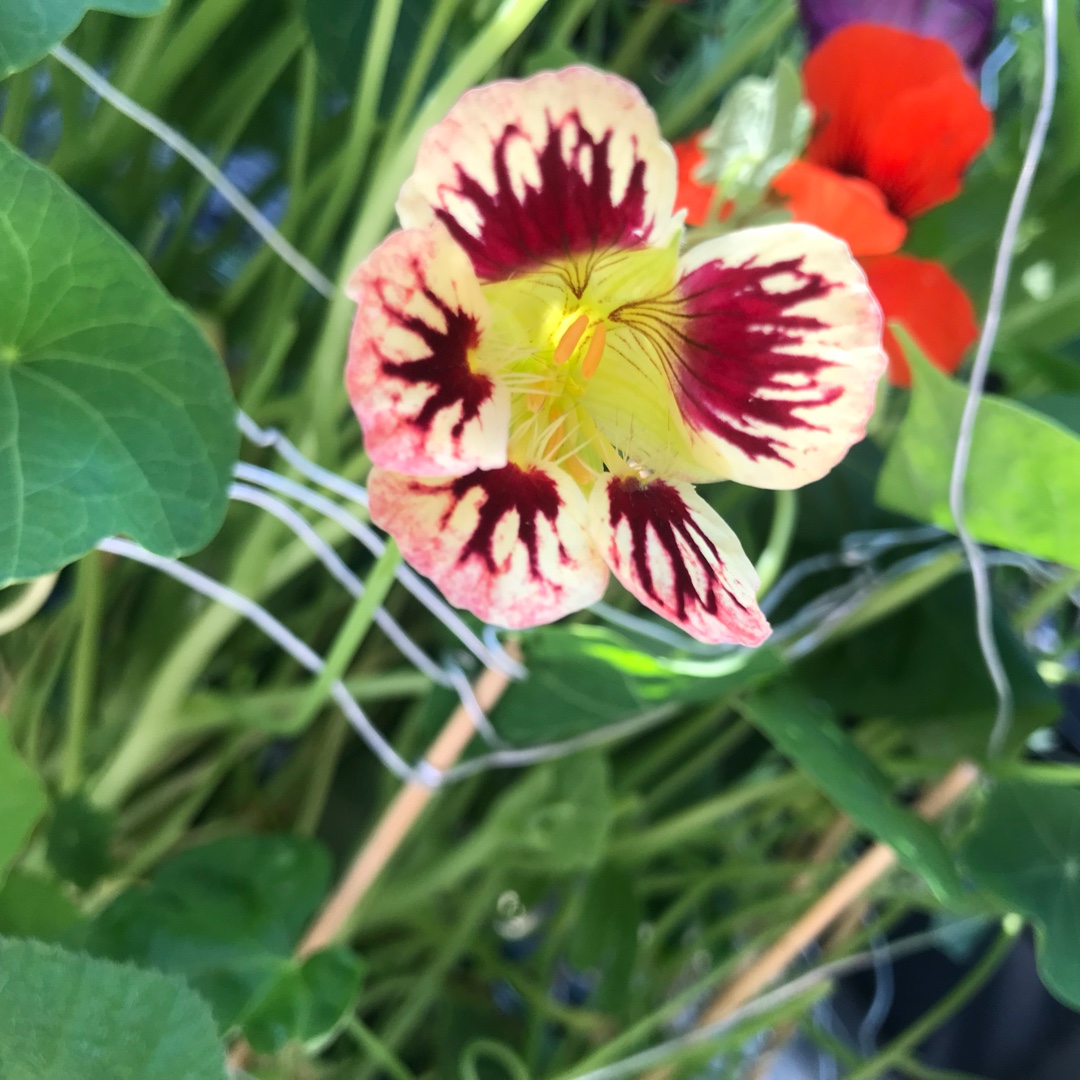
Tropaeolum Majus 'Chameleon'
Nasturtium 'Chameleon'
Nasturtium is an annual of climbing and trailing habit, and is one of the most widely grown species. It is suitable for growing in pots, hanging baskets and for covering trellis work. The mid-green leaves are smooth and circular with waved edges, sometimes variegated, and are edible, with a peppery taste. The faintly scented yellow, orange or red flowers of around 2 inches across, which appear from mid to late summer, are also edible. 'Chameleon' is unusual in two respects - firstly, the flower colours change, from creamy yellows to pinkish reds, but also this plant stays tidy and compact - does not run rampant, as do many nasturtiums
Contributed by @adiamond
-
Full sun
-
Occasional watering
-
A little frost hardy: 32F (0°C)
-
All soil conditions
Common name
Nasturtium 'Chameleon'
Latin name
Tropaeolum Majus 'Chameleon'
type
Annual
family
Tropaeolaceae
ph
5.0 - 7.0 Acid - Neutral
Plant & bloom calendar
-
Best time to plant
-
When the plant will bloom
full grown dimensions
 0.35 M
0.30 M
0.35 M
0.30 M
Tropaeolum Majus 'Chameleon'
Nasturtium is an annual of climbing and trailing habit, and is one of the most widely grown species. It is suitable for growing in pots, hanging baskets and for covering trellis work. The mid-green leaves are smooth and circular with waved edges, sometimes variegated, and are edible, with a peppery taste. The faintly scented yellow, orange or red flowers of around 2 inches across, which appear from mid to late summer, are also edible. 'Chameleon' is unusual in two respects - firstly, the flower colours change, from creamy yellows to pinkish reds, but also this plant stays tidy and compact - does not run rampant, as do many nasturtiums
Flowering Season
From Early Summer TO Early Autumn
Orange or yellow flowers appear from early Summer to early Autumn
Planting
From Mid Spring TO Late Spring
Sow seeds 3/4 of an inch deep in mid to late Spring at the flowering site
Propagating
From Early Spring TO Mid Spring
Nasturtiums self-seed very readily, and flowers allowed to go to seed will drop seed that will grow readily the following Spring. Can also be sown in seed trays - fill a seed tray with seed compost,water and allow to drain.Sprinkle seeds over the surface allowing roughly 25mm space between seeds and cover with a thin layer of compost. Put tray in a clear polythene bag and place on a windowsill. When seedlings show remove plastic bag.When the second pair of leaves appear on the seedlings thin out to 50mm spacing by removing the weakest looking plants.After 2 or 3 weeks and when danger of frost has passed plants can then be planted outside into required position.









